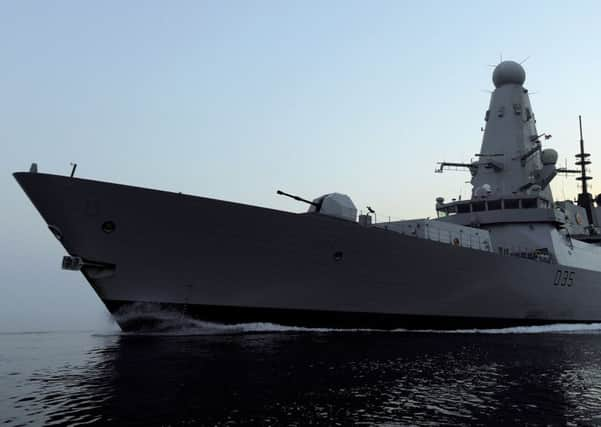Portsmouth scientists help to build UK's first laser cannons


Engineers at the Defence Science and Technology Laboratory are involved in the project to construct the new Dragonfire weapons system.
The scheme’s long-term goal is to produce a high-energy laser weapon that can be mounted on Royal Navy warships and other ground vehicles to blast enemy jets and missiles.
Advertisement
Hide AdAdvertisement
Hide AdBoth the United States and Russia are already steaming ahead with their own laser development programmes.
But it is hoped that Britain’s offering will be able to trump those of the other superpowers.
Harriet Baldwin, minister for defence procurement, said: ‘The UK has long enjoyed a reputation as a world leader in innovation and it is truly ground-breaking projects like the laser-directed energy weapon which will keep this country ahead of the curve.’
Flick Drummond, Portsmouth South’s MP, welcomed the news. She said: ‘The ability to shoot down missiles or other threats with a laser beam is certainly not science-fiction any more and this is an important contract that will allow the technology to be developed by the UK.
Advertisement
Hide AdAdvertisement
Hide Ad‘The precision of lasers could allow more effective defence for our warships than conventional weapons and we must develop this capability to face any future threats as the technology matures.’
A consortium of companies – which includes Gosport-based defence firm QinetiQ – are working with the MoD to produce a fully-armed and operational laser weapon.
It’s hoped the state-of-the-art laser could be tested as early as 2019, rolling out to the UK’s armed forces in the 2020s.
The weapon would work by stimulating the electrons in certain materials which then emit light waves that can be amplified and made to travel together in a super-charged, narrow beam.
Advertisement
Hide AdAdvertisement
Hide AdThese beams could then be used to slice through the metal plating of planes and missiles, targeting vulnerable areas and destroying them.
The first stage of the programme secured in the new £30m deal would be researching how well laser weapons can pick up and track targets at various ranges and in varied weather conditions.
Peter Cooper, from the MoD’s Defence Science and Technology Laboratory, said: ‘This is a significant demonstration programme aimed at maturing our understanding of an immature technology.
‘It draws on innovative research into high power lasers so as to understand the potential to provide a more effective response to emerging threats that could be faced by UK armed forces.’